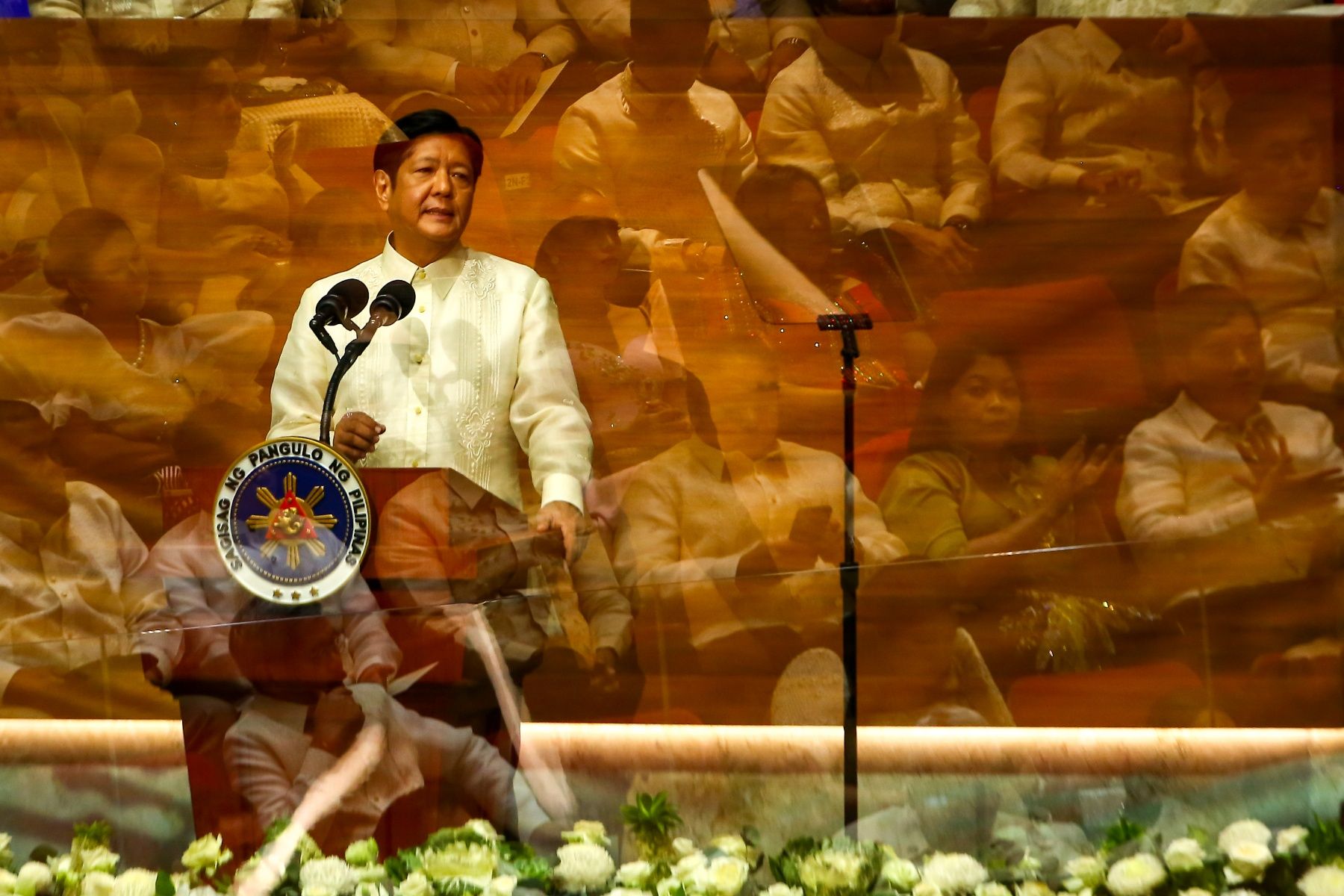President Marcos assured on Monday, July 22, that the country’s energy and internet connectivity capacities are being upgraded to be at par with the Philippines’ economic progress and aspirations.

President Ferdinand 'Bongbong' Marcos Jr. delivers his third State of the Nation Address (SONA) on Monday, July 22, 2024. (Noel Pabalate/MANILA BULLETIN)
In his third State of the Nation Address (SONA) at the Batasang Pambansa in Quezon City, the Chief Executive noted that infrastructure development remains “sustained, strategic, and on schedule” two years into his term.
“Our power and internet services are continuously being upgraded in both capacity and connectivity,” he told members of Congress, the diplomatic corps, and government officials.
Calling power and information technology “vital sectors and pillars” of the economy, he stressed that these “stand to benefit from our aggressive infrastructure development, as befitting our upper middle-income economic target.”
Marcos promised that the public and private sectors will work to bring internet connectivity to far-flung areas.
“Together with our private sector partners, we will efficiently harness the concept of common towers to provide connectivity to Filipinos who are at the far end of the last mile,” he said.
“Expect full government support to ensure the successful completion of this critical project, including policy reforms and streamlined processes.”
Marcos cited the government’s “Free Wi-Fi Program” has already reached 10 million unique user devices in more than 13,000 areas in the Philippines.
Under the National Fiber Backbone, which is at the core of the country’s internet infrastructure development, the President said that phase one was already completed and operationalized, while phases two and three started this year and would be finished by 2026.
“This fiber backbone will give us sufficient capacity in terms of bandwidth,” he added.
But Marcos understood that the country’s progress in internet connectivity must be complemented by the strength of its energy sector.
“As energy projects get completed and new investments pour into the sector, we expect our nation’s power supply to increase at a steady pace to meet our growing demand in the next few years,” he said.
Taking note of the newly inaugurated Mariveles-Hermosa-San Jose transmission line that run through Bataan, Pampanga, and Bulacan, the President touted how this would “further strengthen the reliability of the Luzon power grid.”
He assured that the Visayas region won’t be left behind because “all stages of the Cebu-Negros-Panay backbone project have likewise been completed.”
The project will “stabilize the power situation” in Western and Central Visayas, as well as “avert recurrences of power outages.”
Despite these developments in the energy sector, Marcos recognized the problems in several areas of the country.
“Nonetheless, we are continuously diagnosing and urgently addressing power shortages, as well as the systemic causes of blackouts in unserved and underserved areas,” he said.
“Nireremedyuhan natin ang pangangailangan ng mga lugar na wala pang kuryente at madalas ma-brownout, sa pamamagitan ng microgrid at off-grid systems, at mga missionary small power utilities na sinusuportahan pa rin ng solar (We are resolving the needs of the areas without power and experience brownout through the microgrid and off-grid systems, and the solar-supported missionary small power utilities).”